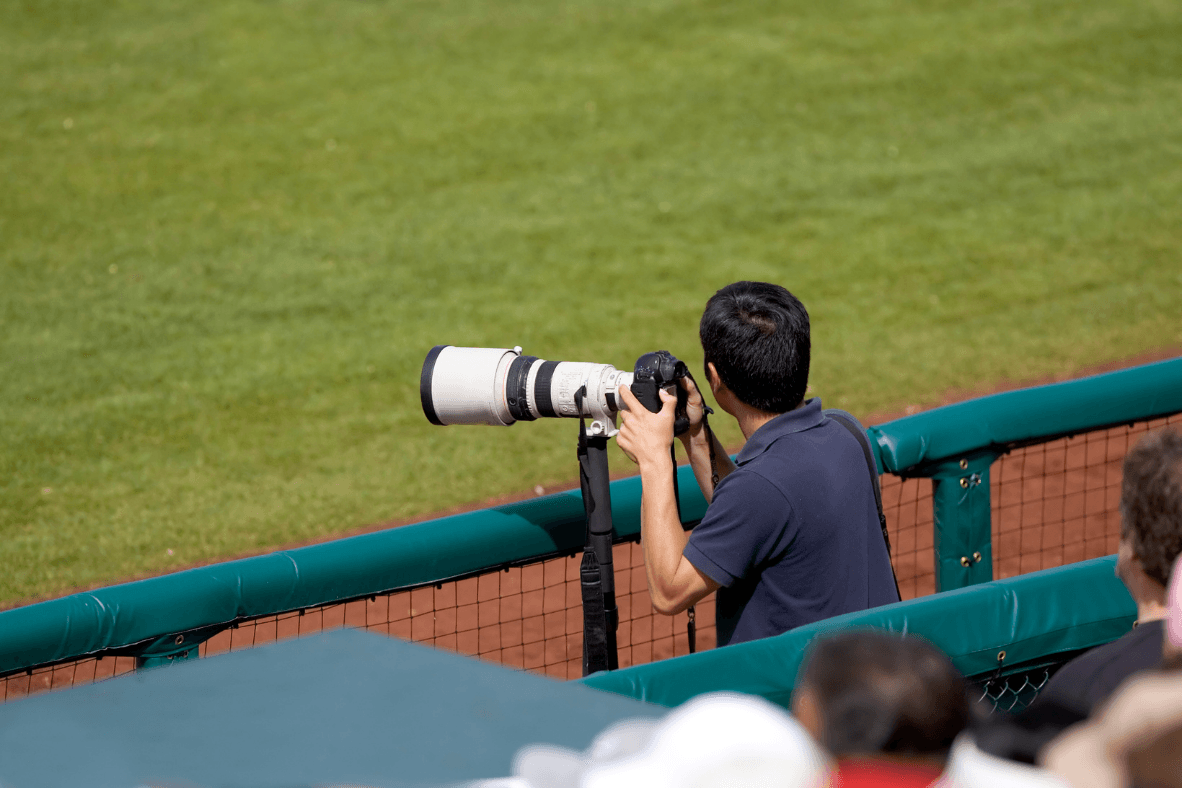Get in touch
How to Cover Elections — From A to Z
The-Biggest-Show-On-Earth, for journalists, has to be The Election. Any election. Federal. Provincial. Municipal. School Board. Parks Board. In all such contests, candidates ask for people’s votes so they can exercise power over the community.
In this video/audio series and compendium white paper, veteran news editor Jim Pumarlo will help reporters and editors navigate the dos and do nots of covering elections.
Jim spent nearly 27 years in two community newspapers in Minnesota – in Red Wing on the state’s Wisconsin border, and in International Falls on the state’s Canadian border. For the majority of that time, he steered the news coverage as editor. He is passionate about community newspapers and believes that community newspapers still play a vital role in today’s fractured media landscape.
Section 1 VIDEO
Lecture 1 How to Cover Elections -- From A to Z? - Part 1
Lecture 2 How to Cover Elections -- From A to Z? - Part 2
Lecture 3 How to Cover Elections -- From A to Z? - Part 3
Lecture 4 How to Cover Elections -- From A to Z? - Part 4
Lecture 5 How to Cover Elections -- From A to Z? - Part 5
Lecture 6 How to Cover Elections -- From A to Z? - Part 6
Lecture 7 How to Cover Elections -- From A to Z? - Part 7
Lecture 8 How to Cover Elections -- From A to Z? - Part 8
Section 2 WHITE PAPER
Lecture 9 How to Cover Elections -- From A to Z?
Lecture 10 How to Cover Elections -- From A to Z? - Recap
Section 3 TRANSCRIPTION
Lecture 11 How to Cover Elections -- From A to Z?
THE BIG EVENT: ELECTION COVERAGE
The-Biggest-Show-On-Earth, for journalists, has to be The Election. Any election. Federal. Provincial. Municipal. School Board. Parks Board.
In all such contests, candidates ask for people’s votes so they can exercise power over the community.
It is democracy.
Often, it is transfer of power.
It is big stuff.
Referenda and recall campaigns notwithstanding, this is the one and only time in the run of a multi-year election cycle that power shifts entirely to the people. And they need to be well informed.
But, of course, voters rarely get an opportunity to personally buttonhole those running for office. They generally rely on the media to learn about the candidates and their issues, as well as the controversies and political missteps that can occur during the course of any campaign.
“I consider election coverage among the greatest responsibilities of coverage,” says Jim Pumarlo, a former editor at two community newspapers in Minnesota. “Election coverage, from start to finish, is among the most demanding tasks in any newsroom.”
Pumarlo asserts that a newspaper’s election coverage is more scrutinized, and subject to challenge from readers, than nearly any other type of reporting that a publication does. People take sides. They have vested interests. It can be exciting. It can get ugly.
Witness the dramatic 2016 US presidential race won by Donald Trump. Some may be surprised to learn that a local campaign – while nowhere near as high profile — can be as internecine and, at the grassroots level, have ramifications every bit as significant.
For this reason, and because of the complexity inherent in reporting on electoral races, it is essential for newspapers to plan extensively beforehand how they will provide coverage, and to establish specific guidelines to ensure fairness.
Election coverage must not only be fair, but seen to be fair. This is a time when journalists must be extra careful to allow for a response from any candidate who is being disparaged. Editors need to make sure that that each side gets roughly equivalent column inches or web space.
Before any campaigning begins, editors should decide on ground rules governing coverage: Whether or not reporters are going to cover every debate. Which races warrant candidate profiles and personal interviews. Where a Q and A format will be used. How news releases are to be handled.
The candidates themselves should be questioned as though applying for a job, says Pumarlo. They should always be asked why they are running – an obvious, but necessary, question.
An election showcases the performance not just of news reporters but of the editorial writers, the editors handling Letters to the Editor and those in charge of creating Web content. It also has implications for the advertising department since paid ads spike during an election period. Circulation, too, can experience a surge.
For community newspapers, there are special challenges. “The enormity of the task simply stretches resources … The months-long campaigns can be extra stressful on smaller newsrooms.” After all, it is not as though regular news events suddenly stop for the duration of a campaign.
At smaller papers, it can be tough to find space for comprehensive coverage. A newspaper may not even publish on a daily basis; “It’s especially frustrating if your community is served by a larger daily newspaper.”
With stretched resources, “you’ll be most successful if you plan early and develop a calendar,” says Pumarlo. He recommends starting the process weeks or even months before the campaigning begins. Any plan should include an outline of staff responsibilities and set timetables.
The editor must determine the scope of the planned coverage, including which races are to be followed. “Don’t be afraid to make the deliberate decisions that some races will receive minimal or no coverage. You have limited resources. Local races should be your priority.”
To be sure, this is precisely where a community newspaper can provide outstanding and differentiated coverage to its readers. A national paper may not bother with covering a race between candidates to head the school board but, for parents in the community, this may be the most important race. And they will look to their community newspaper for their coverage.
Another point about election coverage: reporters should resist getting caught up in reporting the campaigns superficially, as horse races, with reports on every poll that comes out, or as a succession of candidate punches and counter punches. This increasingly is the way newspapers, even big metropolitan dailies, are covering election races.
The website, https://www1.udel.edu/htr/American/Texts/campcov.html,
warns that candidates and their strategists often try these days to use the media mainly to promote and advertise their campaigns — not to inform or educate voters. And, writes University of Delaware professor H.T. Reynolds, their preoccupation mainly is with television.
In planning a local newspaper’s coverage, Pumarlo advocates creating a “master calendar” to keep everyone on task. Such a calendar automatically will generate stories. For example, a story can be expected on the day campaign finance reports are to be filed. Scheduled candidate debates will yield stories on assigned dates as well. This can help the editor plan for manpower allocation.
The Letters page takes on added significance during an election and editors should anticipate a surge in the letters they will receive. The goal should be to give voice to as many readers as possible while ensuring the exchanges are substantive and not offshoots of some partisan master letter or mass mailing.
Editors may decide to limit letters written by political candidates who obviously have other avenues during a campaign to transmit their views and limit, or put restrictions on, any single letter writer’s contributions. Rules should be communicated up front to everyone.
Editorials that endorse individual candidates have strong appeal in a small community. “I believe newspapers have a right, and a responsibility, as an institution in your community,” to endorse candidates, says Pumarlo. Particularly at the school board and municipal council levels.
In making an endorsement, writers should stick to issues and facts, and stay away from personalities or personal biases on the part of the writer or editors.
If a newspaper is hesitant about making candidate or party endorsements, it might consider another strategy – writing an editorial outlining what it believes are the election’s key issues, stating where the newspaper stands on each one. The newspaper can then invite the readers to vote for those politicians they believe align with those stands.
It is important for a newspaper to allow plenty of feedback from readers, and to give them a chance to challenge the basis of any of the newspaper’s endorsements.
Pumarlo believes the most valuable contribution a publication can make in its newspaper coverage of an election is, not through provision of facts about the race or the election results, but its analysis throughout the contest and in its aftermath.
That means, going beyond the apparent and asking, why is this happening? And, what does it signify? It means providing context as well. How does what is happening relate to events in the previous election? What does the shift tell us about what is going on?
In delivering analysis, the perspectives of political scientists at a local university may be helpful. Also, incumbents who decided not to run this time probably have some interesting observations. Perhaps such political experts might be convinced to write a guest column.
And, once again, community newspapers should concentrate in all they do primarily on local coverage. Readers can find their national coverage everywhere but can get the really local coverage only from their community newspaper. All races potentially can be localized. Even a federal campaign can provide plenty of local angles.
In telling the election story, editors and reporters should not overlook the many opportunities created for visual creativity and analysis. Maps and graphics can be illuminating when geographical areas or electoral votes are the focus.
Pumarlo says newspapers should take full advantage of the Web at election time. “Websites are a vital tool in election coverage. [A newspaper’s website] has the ability to strengthen all aspects of election coverage.”
The benefit presented is in the unlimited space the newspaper’s website allows. And websites are an ideal place to showcase audio and video coverage of campaign events and candidate interviews, allowing a newspaper to provide timely coverage — “just like your print and broadcast competitors”.
Editors should promote their websites. “Voters are increasingly going to the web as a source of election coverage. You must be proactive in both developing and promoting the resource.”
To Recap:
- Election campaigns give newspapers a great opportunity to showcase their value to a community; and for local races, the community newspaper may be the only game in town;
- Because resources at a smaller paper probably will be stretched by a campaign, it is worthwhile to meticulously plan coverage with the help of a master calendar;
- Guidelines to ensure consistency and fairness in coverage should be in place and communicated to staff and readers alike;
- Community newspapers should not shy from endorsing candidates, especially in the case of local races.
- Policies will be needed to govern the additional Letters to the Editor that will be received during an election campaign.
- Community newspapers should be vigilant in allowing plenty of reader input and feedback during a political campaign.



Modules
Do you work in NewsMedia?
Contact us for more information.
Request Access - Form
Thank you for requesting access to NewsMediaPlaybook.com.
We will review your submission and back to you as soon as possible.
Oops, there was an error with your request.
Please try again later.
All Rights Reserved | BCYCNA







